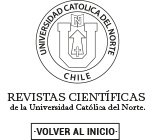Submissions
Research
His section includes essays and studies, meaning:
Essays: work of a speculative or informative nature or with an eminently practical or forensic projection.
Studies: original and unpublished work referring to a study or research of interest in the legal world, which is finished or whose progress allows the communication of its results.
This section's maximum length is 90,000 characters without spaces (approximately 27 pages), including footnotes and bibliographical references.
If you want to review the Evaluation Guidelines for the section, you can download them here.
Case law comments
This includes, respectively, the specialised analyses of the contributions and new features of the judgement(s) being commented. They must have a maximum length of 40,000 characters without space (approximately 15 pages), including footnotes and bibliographical references.
If you want to review the Evaluation Guidelines for the section, you can download them here.
Reviews
A section that contains the author's conclusions about the review of a text published by another author, giving an account of their detailed reading and critique of the content of the work analysed. Reviews cannot exceed 16,000 characters without spaces (approximately seven pages), including footnotes and bibliographical references.
Copyright Notice
The authors will retain their copyrights and guarantee the journal the right to the first publication of their work, which will simultaneously be subject to the Creative Commons Attribution/Recognition 4.0 International License, which allows third parties to distribute, mix, adjust and build upon their work, even for commercial purposes, as long as the author is indicated and as their first publication in this journal.
Privacy Statement
Personal data protection and privacy notice.
Revista de Derecho (Coquimbo. En Línea), in respect of Act No. 19.628 (1999), will not communicate or transfer to third parties the personal data of its users without the express consent of the owner. Notwithstanding the above, in case of a judicial order, the requested information will be delivered.




_(1).png)












